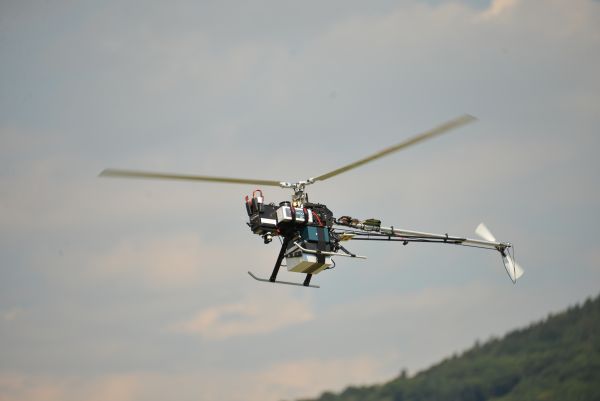OMOSA - Open Modular/Open Source Avionics Architecture for Remotely Piloted Aircraft Systems
Short Description
Motivation
In European civil aviation, the concept of "Integrated Modular Avionics" (IMA) is currently state of the art and is used on all major models, such as the A380, A400M and A350.
Objectives
- Application of the IMA concept to UAV avionics, in particular flight control.
- Investigation of structure integrated antennas.
- Navigation solution for unmanned aerial systems.
Content
Within OMOSA, the following research questions should be answered:
- Under the constraints of small RPAS, how can an IMA-based avionics architecture, which relies heavily on modular assembly and open source software, be realised?
- In particular, how does the cross-communication between modules have to be designed in order to meet reliability requirements?
- How can the quality of the attitude, position and kinematics information determined using commercial navigation sensors, be ascertained in terms of, for instance, statistical parameters, in order to subsequently determine the Required Navigation Performance (RNP) of the flight system?
- What are the boundary conditions for a manufacturing process in order to be able to successfully integrate compliant antennas in CFRP and especially in a fuselage made of CFRP?
- Which properties (technical, but also in terms of cost, size, weight) can be achieved over the latest technology?
Finding answers to these questions should be made possible by setting up a demonstrator and carrying out a measuring campaign to validate the sought after properties.
Methodology
Available real-time operating systems and modular hardware with differing performance levels are evaluated and integrated into a complete system using a backplane with reliable cross-communication. As exemplary features, the above listed subsystems are implemented and put into operation.
The goal of the project is to lay the foundations for the further commercialisation of an IMA platform for small RPAS that, in addition to reducing the effort required to implement new features, also contributes to energy savings.
Expected results
OMOSA avionics is intended to provide manufacturers, particularly those of small RPAS, with a standardised aircraft design and reduced development time by using COTS hardware, in contrast to a conventional distributed structure. Furthermore, a quality indicator in the navigation module should demonstrate the achievable navigation accuracy and contribute to an increase in safety margins. By adapting or integrating antennas into the fuselage, the weight and cost of the overall aircraft are reduced.
Outcome
The final assessments of the OMOSA system based on driving and flight tests provided information on the performance of the entire system. While the redundancy strategy in avionics appears to be yielding results, the data link is still a limiting factor despite the function of the modules used.
Project Partners
- FH JOANNEUM GmbH - Coordinator
- Aerodyne Systems GmbH
- PIDSO - Propagation Ideas and Solutions
- TU Graz, Institut für Navigation
Funding program: TAKE OFF


